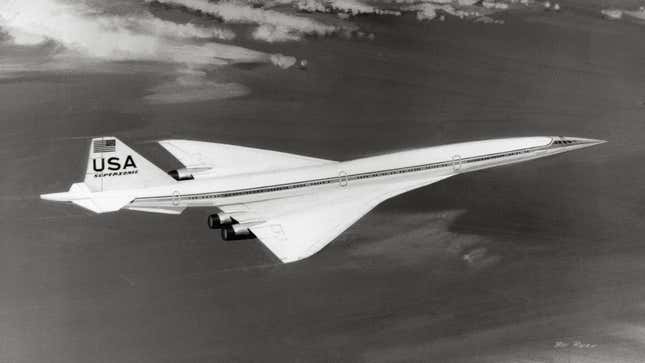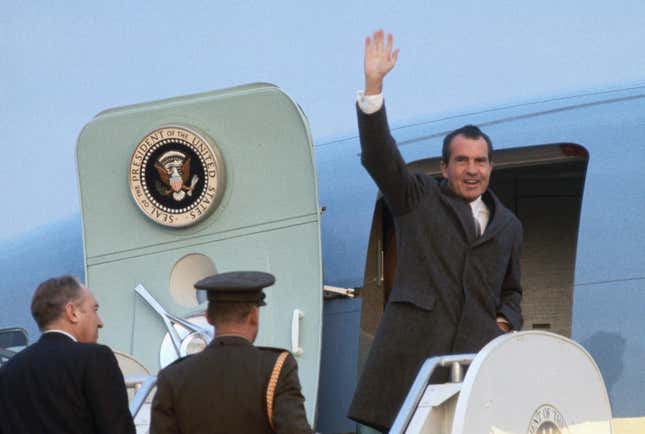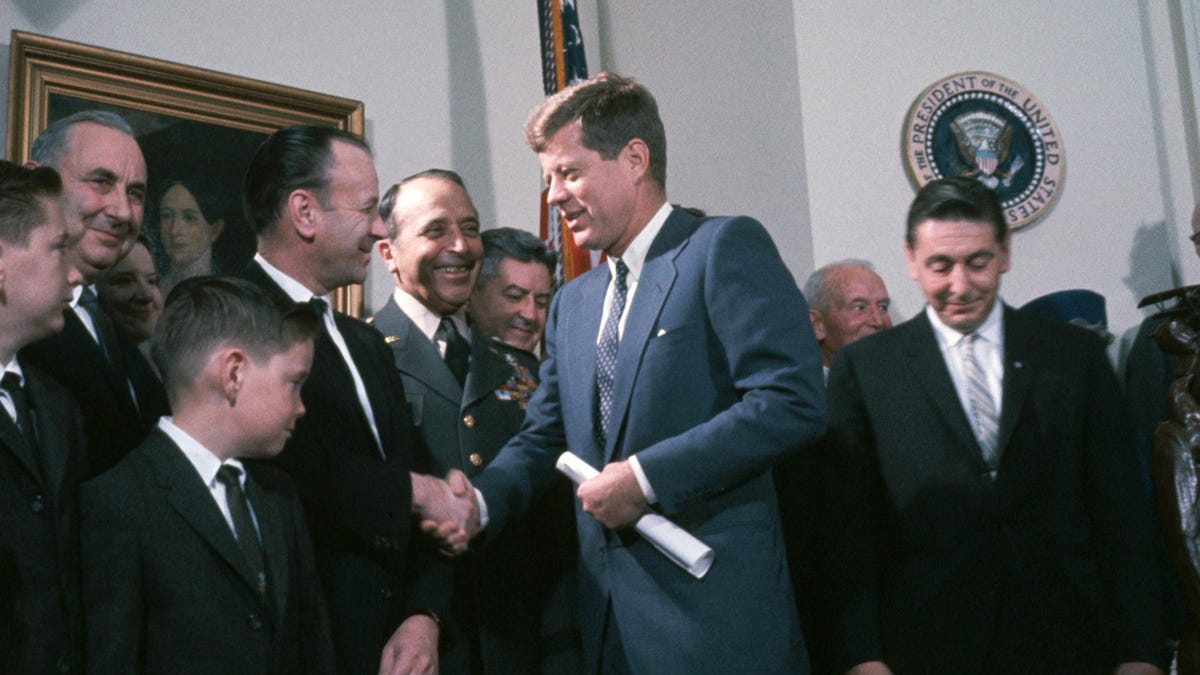President John F. Kennedy, in June 1963, walked out to a podium at Falcon Stadium, the football stadium at the Air Force Academy in Colorado Springs. While addressing the graduating class of cadets, he announced that the United States would embark on the challenge of constructing the world’s first supersonic commercial airliner. It was the declared start of a three-way race between the U.S., the Concorde and the Soviet-built Tupolev Tu-144. America would place worse than last — the nation wouldn’t even cross the finish line.
Kennedy specifically laid out the goal “to develop at the earliest practical date the prototype of a commercially successful supersonic transport superior to that being built in any other country of the world.” Admittedly, the speech wasn’t as inspirational, bombastic, or memorable as the one he had given at Rice University in Houston the previous year. You know the one. “We choose to go to the Moon in this decade and do the other things, not because they are easy, but because they are hard.”
Framing the development of a supersonic airliner as an international competition was a natural move with a rationale similar to that of the Space Race. The U.S. government feared the country’s pre-eminent place in the aviation industry could be usurped by either the Soviet Union or the combined efforts of France and the United Kingdom. The Kennedy Administration would dedicate public funding to a private company for the program, but public support would be needed for that taxpayer money.
A memorandum was prepared for Kennedy just two days before the speech at the Air Force Academy. The document described the current state of play and the basic requirements for a potential American supersonic airliner. The aircraft had to cruise faster than Mach 2.2, carry at least 150 passengers and have enough range to fly between New York and Paris. The only thing the President had to do was give his approval. The memorandum did end with a postscript directly addressed to Kennedy:
Mr. President –
The two biggest risks in this program are that U.S. industry may be able
– (1) to overcome the sonic boom so that it will be tolerated by the population, and
– (2) to get the cost down to a competitive level.
These risks appear to be worth taking.

With the President’s approval, the program moved on to an open design competition between American aerospace companies. Kennedy wouldn’t live to see the end of this process as he was killed by Lee Harvey Oswald in Dallas just five months later. Designs were submitted by Lockheed, North American and Boeing in early 1964.
Even before a winner was selected, the postscript would haunt the program. The costs were already astronomical. Congress would have to approve $100 million upfront, or $1 billion today when adjusted for inflation. The administration hoped to cover 75 percent of development costs at most, which was estimated at $750 million ($7.5 billion in today’s dollars). Sonic boom also proved to be a worse problem than initially feared. The Federal Aviation Administration, with the Air Force’s help, sent fighter jets to pelt Oklahoma City with sonic booms for six months straight in 1964. The experiment meant to test the populace’s resilience shattered windows and provoked complaints by thousands.
The Boeing 2707 would be selected as the winning design in 1967, with the cards stacked against the airliner. However, the planemaker would overpromise and never deliver. Boeing had plans for a 250-seat aircraft that could cruise at Mach 3, far exceeding the government’s requirements. The potential lucrative market envisioned to recoup the development costs immediately dried up.

While President Richard Nixon wanted to keep plowing money into the supersonic program, the only arguments he had left to keep funding flowing were national pride and propping up a stagnating aerospace industry. In 1971, the Senate voted 51-46 to end funding for the program, and Boeing canceled development as a result. The manufacturer would have needed at least another $500 million ($3.8 billion in today’s dollars) to get two 2707 prototypes in the air. A contemporary article from the New York Times summarized the crux of the debate in a single sentence, “Were its commercial prospects good, and if so, why did it have to rely on Government funding?”
The Concorde also hit development delays and had cost overruns, but the British and French governments stood the course. The memorandum to Kennedy had predicted that Concorde would make its first commercial flight in January 1970, but it didn’t hit the skies until 1976. While a tremendous aircraft, the Concorde was almost entirely constrained to transatlantic routes and relied on government subsidies until it was retired in 2003.
While the Senate made the financially prudent decision, the world was denied a signature American airliner. Boeing’s project meant as a stop-gap until the 2707’s introduction became an icon in its own right. The stop-gap aircraft was the Boeing 747.

